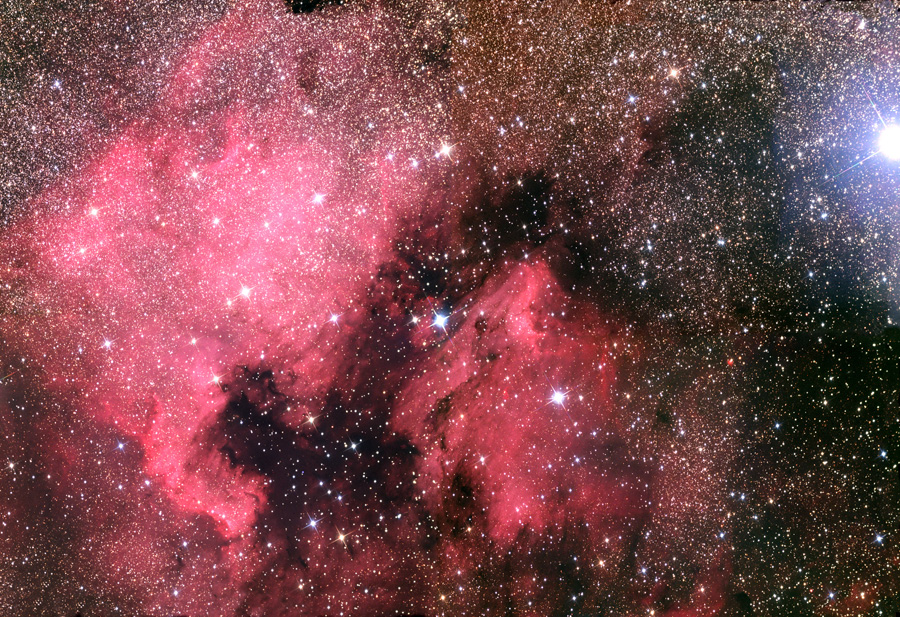This four frame mosaic subtends more than 4 degrees of the sky. You could easily fit over 30 Moons in this picture! The very bright star on the right of the frame is Deneb, and surprisingly it is not associated with the nebula as it is well over 1,500 light years away. Indeed, if Deneb were 50 times closer (30 light years, I am insinuating absolute magnitude) it would be brighter than Venus in the sky and rival the moon! (-7.2 in magnitude).
But the wonderfully glowing clouds shown here are closer, and only until recently the star (or stars) responsible for making them glow has been a mystery. In the fall of 2004 two astronomers, Fernando Comeron and Anna Pasquali, published a paper that seems to identify this secretive star. The star is hidden behind thick clouds of dust that attenuate its light. By observing in the infrared and looking for stars that are intrinisically hot and bright (OB)- only one seemed to fit the shoe! Click HERE to the same high-resolution image you get when you click on the image below... but with an arrow indicating this stealthy star. Look just off the coast of "Florida" in the Atlantic Ocean. (between NA and the Pelican nebula)
Click on image for larger version.

|
About this image:
Equipment
76mm Televue (480mm f/6.3 refractor)
SBIG
ST10XME CCD camera with color filter wheel
| L R G B
color production was used to create this image. Luminance = synthetic binned 1x1 Red = 20 minutes binned 1x1 Green = 20 minutes binned 1x1 Blue = 20 minutes binned 1x1 |
|
Hiçbir yazı/ resim izinsiz olarak kullanılamaz!! Telif hakları uyarınca bu bir suçtur..! Tüm hakları Çetin BAL' a aittir. Kaynak gösterilmek şartıyla siteden alıntı yapılabilir.
The Time Machine Project © 2005 Cetin BAL - GSM: +90 05366063183 - Turkiye / Denizli
Ana Sayfa /
index
/ Roket
bilimi / ![]() E-Mail
/
CetinBAL
/
UFO Technology
E-Mail
/
CetinBAL
/
UFO Technology
Kuantum Fizigi / New World Order ( Macro Philosophy )
Copyright(c) 2003 - 2006 - Cetin BAL - All rights reserved.